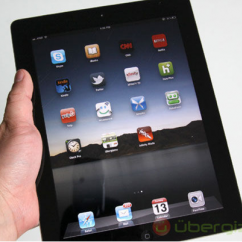Articles and News
FIVE DIGITAL TRENDS THAT WILL AFFECT PRESTIGE BRANDS IN 2012 February 08, 2012 (0 comments)

New York, NY—L2 ThinkTank, which specializes in digital innovation in the luxury market, has identified five trends that will significantly impact luxury brands this year.
L2’s founder Scott Galloway addressed the jewelry industry last year during GIA’s International Gemological Symposium. At that time, he gave the luxury jewelry and watch sector terrible marks for digital innovation according to L2’s Digital IQ Index, but by the second Index later in the year the industry had made huge strides toward improvement, and L2 acknowledged the sector has one of the highest levels of customer engagement of any luxury category. The trends outlined below will impact the jewelry and watch industries as much as any other luxury sector—and given the number of iPads seen in the hands of both exhibitors and retailers at Centurion last week, the industry is keeping pace with the shift toward mobile, the top trend on L2’s list of predictions.
The five trends L2 has identified for luxury in 2012 are:
1) Mobile and iPad e-commerce will triple. A Pew report released in January found the number of Americans who own tablets nearly doubled in the previous month alone. (Editor’s note: It will be worth revisiting these numbers again, because the previous month as indicated here was December; i.e. Christmas.) Affluent and highly educated consumers are the strongest tablet-owning demographic.
But holiday sales aside, sales of mobile devices are now outpacing sales of PC’s, and even in December, Americans averaged 22% more time per day with mobile apps than browsing the Web. 7% of all U.S. Web traffic occurs on a mobile device, but that figure doubles to 14% for searches of prestige brands. The iPad owns 70% of tablet market share, and luxury brands register conversion rates that are two to three times higher on iPads than on traditional PCs.
2) Facebook will begin to show ROI for its users. While many prestige brands can boast millions of fans who “like” their pages, the most value comes from the incremental traffic the site drives. For example, in 2009, 1.9% of traffic to Burberry.com originated from Facebook. A year later, that figure had jumped to 29%. With Burberry’s 10,000,000 Facebook fans, that’s a huge amount of visitors to its site, where they’re proving to be not just advocates, but also customers.
3) Social media will expand significantly, with Tumblr, Instagram, and Pinterest poised for rapid growth. Listen for these terms—you’ll hear them a lot more often.
Blogging, for example, has gone beyond the standard text-with-a-few-photos format offered by early blog tools. Today, Tumblr allows bloggers to express themselves through photos and interactive media, and boasts 40 million microblogs. Prestige brands like Donna Karan, Alexander McQueen, and the Mandarin Oriental hotel group use the site daily.
Instagram, meanwhile, is a photo-sharing site that rapidly outpaced existing Flickr—even though it only supports Apple iOS users. And Pinterest is like a virtual global bulletin board, where users “pin” items that caught their eye—but they also can browse and “re-pin” posts from other users.
4) Within five years, e-commerce in China will be prestige brands’ biggest opportunity. Chinese with money are bucking the country’s tradition of saving in favor of buying, especially Western prestige brands, But L2 says the most successful brands will be the ones with the most robust e-commerce sites. Unlike Americans, Chinese tend not to travel as frequently to other cities, so brands that limit their presence to boutiques in top-tier cities are cutting out a huge population of millionaires that live in second-tier cities but want the latest and greatest of luxury brands.
5) The enemy is not who you think! A 2010 survey of affluent consumers with household income above $300,000 found that 64% had made at least one online purchase in the past year. A 2011 survey of the same group found that number had jumped to 92%. Their favorite e-commerce sites were Zappos, Overstock.com, Groupon, eBay, and the number-one behemoth, Amazon.com. Blue Nile wasn’t even mentioned, but Amazon is growing at five times the rate of overall retail in the United States, and three times the rate of overall e-commerce. The site also has a 37% share of market in m-commerce, and L2 experts believe it will be important to retailers’ success to include Amazon in their channel strategies.
To watch L2’s video with further detail, click here.
Separately, L2 also predicts that digital will decide luxury’s new iconic brands. Brands don’t earn their prestige solely through high prices—a dedication to maintaining quality standards and superior aesthetics is important too. But digital media lowers the cost of entry and does allow younger—or even new—brands to reach iconic status far sooner than traditional marketing and media would have previously allowed. Click here to read more.
(Photo at top: Ubergizmo)







